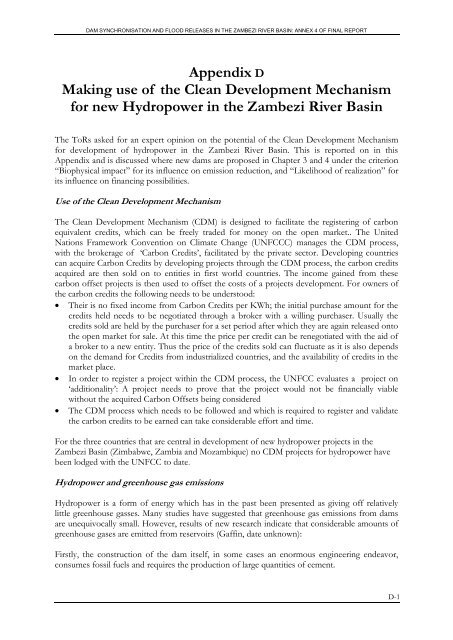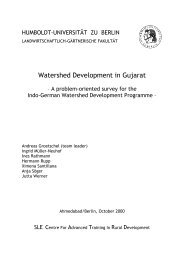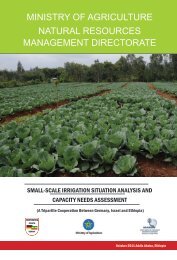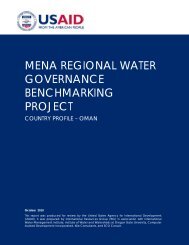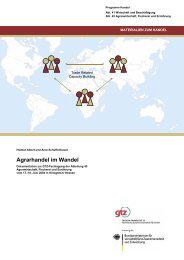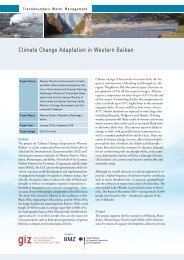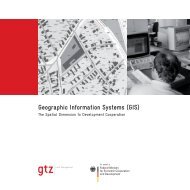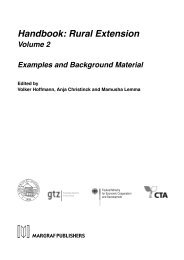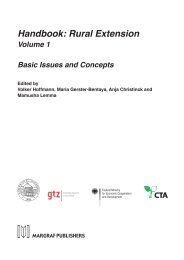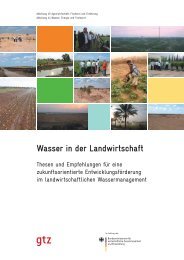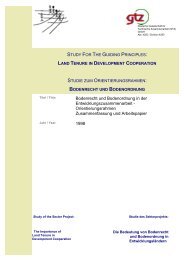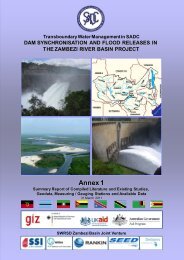Dam Synchronisation and Flood Releases - agriwaterpedia.info
Dam Synchronisation and Flood Releases - agriwaterpedia.info
Dam Synchronisation and Flood Releases - agriwaterpedia.info
You also want an ePaper? Increase the reach of your titles
YUMPU automatically turns print PDFs into web optimized ePapers that Google loves.
DAM SYNCHRONISATION AND FLOOD RELEASES IN THE ZAMBEZI RIVER BASIN: ANNEX 4 OF FINAL REPORT<br />
Appendix D<br />
Making use of the Clean Development Mechanism<br />
for new Hydropower in the Zambezi River Basin<br />
The ToRs asked for an expert opinion on the potential of the Clean Development Mechanism<br />
for development of hydropower in the Zambezi River Basin. This is reported on in this<br />
Appendix <strong>and</strong> is discussed where new dams are proposed in Chapter 3 <strong>and</strong> 4 under the criterion<br />
―Biophysical impact‖ for its influence on emission reduction, <strong>and</strong> ―Likelihood of realization‖ for<br />
its influence on financing possibilities.<br />
Use of the Clean Development Mechanism<br />
The Clean Development Mechanism (CDM) is designed to facilitate the registering of carbon<br />
equivalent credits, which can be freely traded for money on the open market.. The United<br />
Nations Framework Convention on Climate Change (UNFCCC) manages the CDM process,<br />
with the brokerage of ‗Carbon Credits‘, facilitated by the private sector. Developing countries<br />
can acquire Carbon Credits by developing projects through the CDM process, the carbon credits<br />
acquired are then sold on to entities in first world countries. The income gained from these<br />
carbon offset projects is then used to offset the costs of a projects development. For owners of<br />
the carbon credits the following needs to be understood:<br />
Their is no fixed income from Carbon Credits per KWh; the initial purchase amount for the<br />
credits held needs to be negotiated through a broker with a willing purchaser. Usually the<br />
credits sold are held by the purchaser for a set period after which they are again released onto<br />
the open market for sale. At this time the price per credit can be renegotiated with the aid of<br />
a broker to a new entity. Thus the price of the credits sold can fluctuate as it is also depends<br />
on the dem<strong>and</strong> for Credits from industrialized countries, <strong>and</strong> the availability of credits in the<br />
market place.<br />
In order to register a project within the CDM process, the UNFCC evaluates a project on<br />
‗additionality‘: A project needs to prove that the project would not be financially viable<br />
without the acquired Carbon Offsets being considered<br />
The CDM process which needs to be followed <strong>and</strong> which is required to register <strong>and</strong> validate<br />
the carbon credits to be earned can take considerable effort <strong>and</strong> time.<br />
For the three countries that are central in development of new hydropower projects in the<br />
Zambezi Basin (Zimbabwe, Zambia <strong>and</strong> Mozambique) no CDM projects for hydropower have<br />
been lodged with the UNFCC to date.<br />
Hydropower <strong>and</strong> greenhouse gas emissions<br />
Hydropower is a form of energy which has in the past been presented as giving off relatively<br />
little greenhouse gasses. Many studies have suggested that greenhouse gas emissions from dams<br />
are unequivocally small. However, results of new research indicate that considerable amounts of<br />
greenhouse gases are emitted from reservoirs (Gaffin, date unknown):<br />
Firstly, the construction of the dam itself, in some cases an enormous engineering endeavor,<br />
consumes fossil fuels <strong>and</strong> requires the production of large quantities of cement.<br />
D-1


